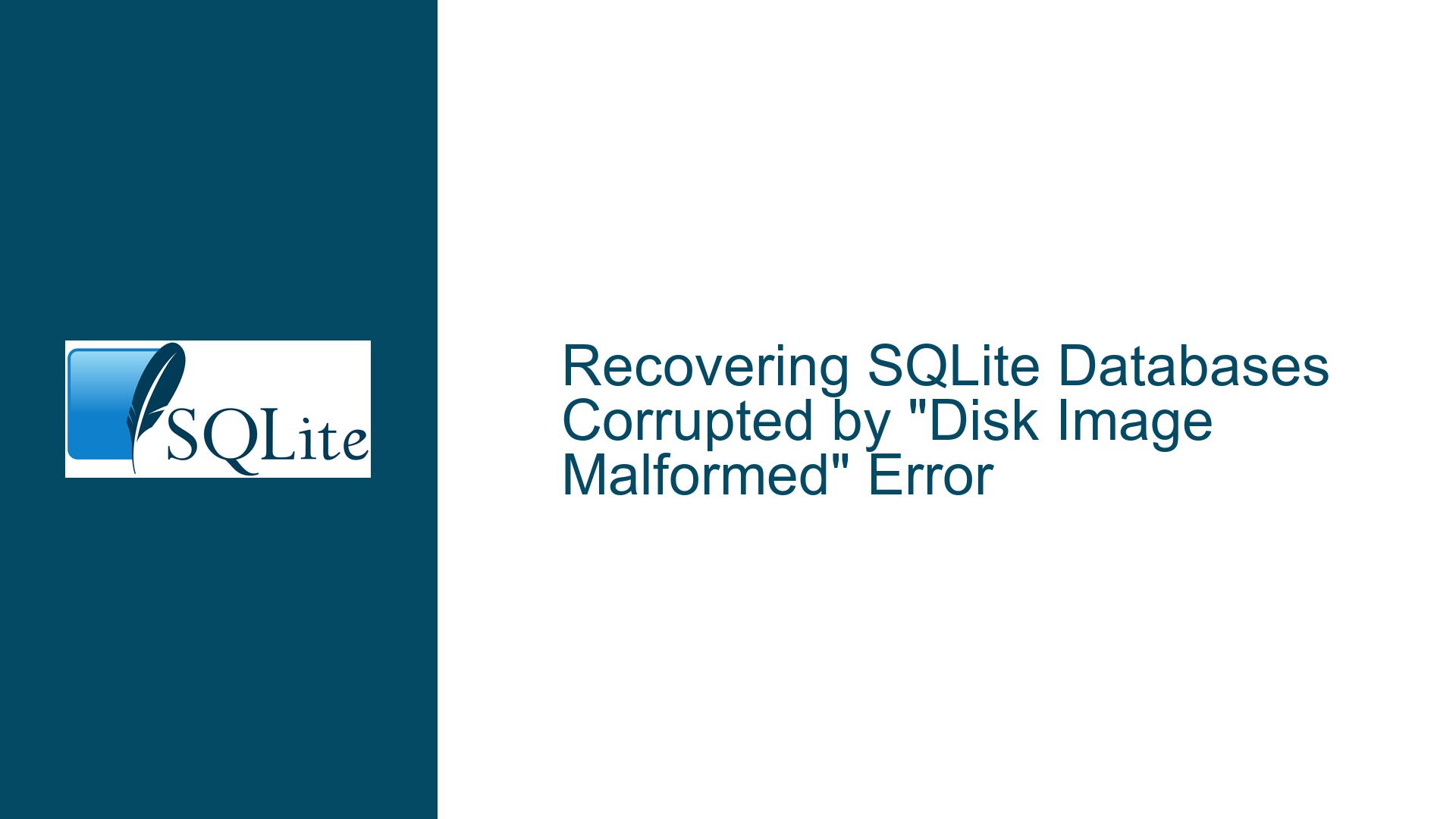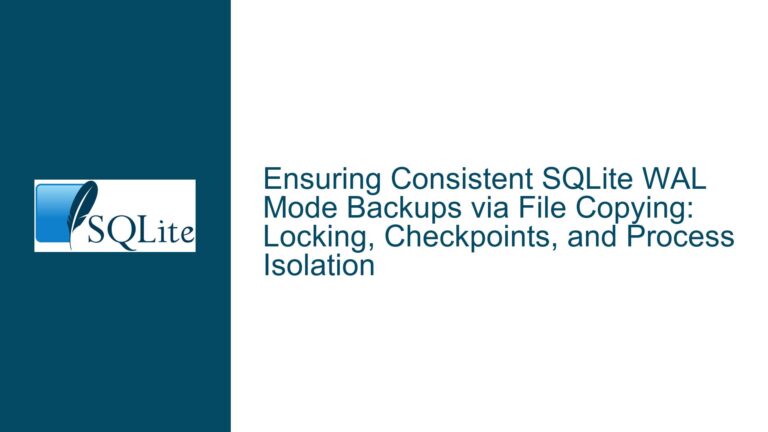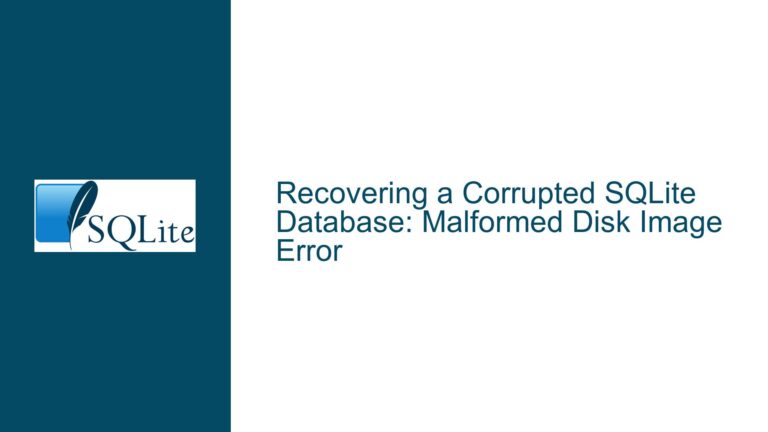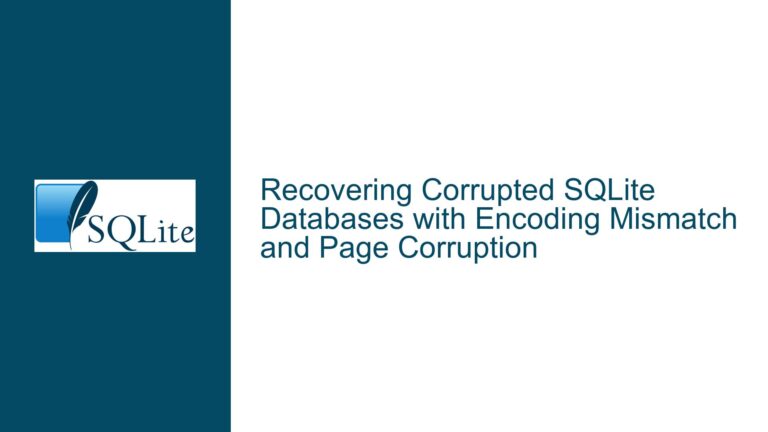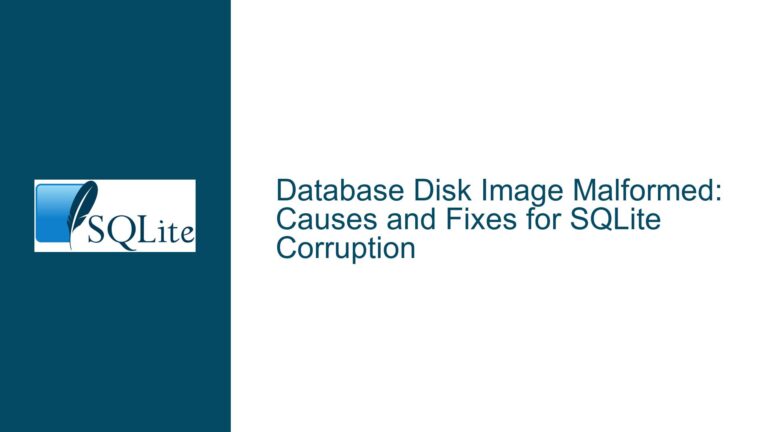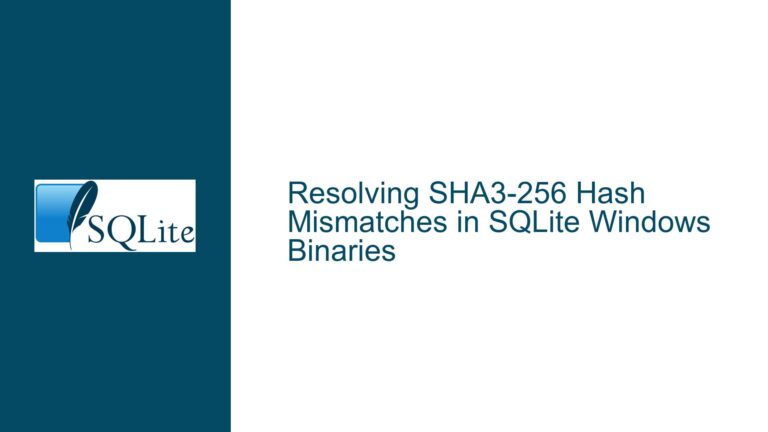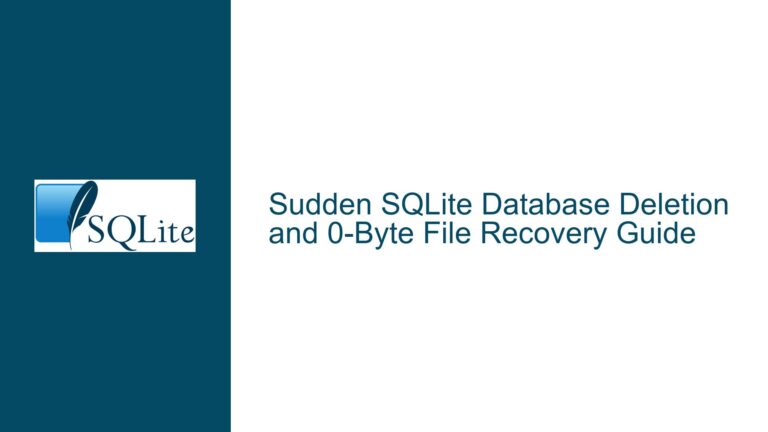Recovering SQLite Databases Corrupted by “Disk Image Malformed” Error
Understanding the "Disk Image Malformed" Error and Partial Data Accessibility via .dump
The "disk image malformed" error (SQLite error code 11) occurs when the database engine detects structural inconsistencies in the SQLite file format. This error indicates that one or more database pages contain invalid data, violating the predefined schema or storage rules. A critical characteristic of this error is its non-deterministic behavior: some operations fail immediately, while others (like .dump) may partially succeed. The .dump command generates SQL text output by iterating through the database’s schema and data without fully validating the entire file structure. This allows it to bypass localized corruption in specific rows or pages, producing output until it encounters irrecoverable damage.
When the database header, system tables, or critical B-tree structures are corrupted, standard SQL operations (e.g., SELECT, PRAGMA) fail because they rely on these components to locate and validate data. However, .dump operates at a higher level, reconstructing SQL statements from visible schema objects and their associated data. This explains why the user observed intact data before and after two corrupted rows. The partial success of .dump suggests the corruption is confined to specific regions, leaving the majority of the database recoverable.
The challenge lies in converting the .dump output into a functional database. Direct execution of .dump may still expose residual corruption if the generated SQL includes invalid references or incomplete transactions. Furthermore, the error’s persistence across most SQL commands indicates that the original database file is no longer usable for read/write operations, necessitating reconstruction from the dump or specialized recovery tools.
Root Causes of "Disk Image Malformed" Errors and Partial Data Salvage
File System or Storage Media Corruption: Hardware failures, sudden power loss, or improper device ejection can corrupt database files. For example, a partially written page due to an interrupted transaction leaves the database in an inconsistent state. SQLite’s write-ahead logging (WAL) and rollback journal mitigate this risk, but these mechanisms can fail if the storage subsystem does not honor flush commands or if the file system itself is damaged.
Software Bugs or Misconfiguration: Applications that directly manipulate SQLite files without using the API risk introducing structural inconsistencies. Examples include altering the file while a transaction is pending, using incompatible compilation flags, or enabling features like SQLITE_FCNTL_PERSIST_WAL without proper handling.
Edge Cases in Database Operations: Bulk data imports, schema modifications, or vacuum operations can expose race conditions or memory corruption in SQLite or its dependencies. These scenarios are rare but can leave the database in a malformed state if the process is interrupted.
File Transfer or Backup Errors: Copying an SQLite file while it is actively being modified (e.g., via cp on Unix systems without file locking) can capture an intermediate state. Similarly, network transfers that drop packets or introduce bit flips may corrupt the file.
The interaction between these factors and SQLite’s error detection logic determines whether .dump can salvage data. Since .dump does not validate page checksums or cross-reference all B-tree linkages, it can extract data from structurally sound regions while skipping over corrupted sections that would otherwise trigger immediate errors.
Comprehensive Recovery Strategies and Post-Recovery Validation
Step 1: Attempt Full Reconstruction via .dump
Execute the command:
sqlite3 corrupted.db ".dump" | sqlite3 recovered.db
This pipes the SQL text output from the corrupted database into a new database file. If the corruption is confined to non-critical regions, this method rebuilds tables, indexes, and triggers while excluding damaged rows.
Key Considerations:
- Use the
-bailoption to halt.dumpon the first error:sqlite3 -bail corrupted.db ".dump" | sqlite3 recovered.dbThis prevents the propagation of partially written data from corrupted sections.
- If the dump terminates prematurely, inspect the output for the last valid SQL statement. Manually remove corrupted rows from the dump file before reimporting.
Step 2: Deploy SQLite’s Recovery Extension
For advanced corruption, use the sqldiff recovery tools or compile the recovery extension. This extension reconstructs data by scanning raw database pages, bypassing high-level structures:
sqlite3 corrupted.db 'CREATE VIRTUAL TABLE temp.recovery USING recover;
INSERT INTO recovered_table SELECT * FROM temp.recovery;'
This method is effective when system tables are damaged, as it infers the schema from data patterns.
Step 3: Validate and Repair the Recovered Database
After reconstruction, perform integrity checks:
PRAGMA integrity_check;
PRAGMA foreign_key_check;
If errors persist, export individual tables:
sqlite3 recovered.db ".dump --preserve-rowids" > tables.sql
The --preserve-rowids flag retains ROWID assignments, crucial for tables without explicit primary keys.
Step 4: Mitigate Future Corruption
- Enable WAL mode for atomic writes:
PRAGMA journal_mode=WAL; - Regularly back up databases using the
.backupcommand:sqlite3 original.db ".backup backup.db" - Monitor storage health with tools like
smartctl(for SSDs/HDDs) orfsck(for file systems).
Step 5: Manual Binary Inspection (Advanced)
Use a hex editor or xxd to inspect the database header (first 100 bytes) for valid SQLite format identifiers and version numbers. Corrupted headers often manifest as invalid strings (e.g., missing "SQLite format 3" at offset 0). Reconstruct headers from a template if necessary.
By methodically applying these steps, users can maximize data recovery while minimizing the risk of propagating corruption. The choice between .dump and specialized tools depends on the corruption’s scope and the user’s technical proficiency. Post-recovery, rigorous validation and proactive maintenance are essential to ensure database longevity.
